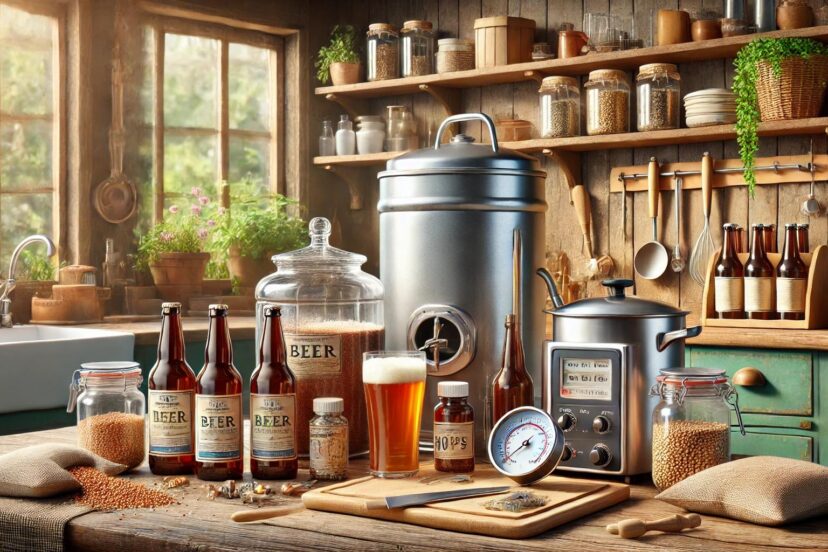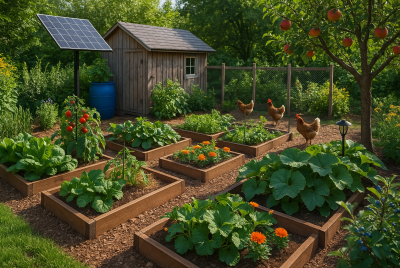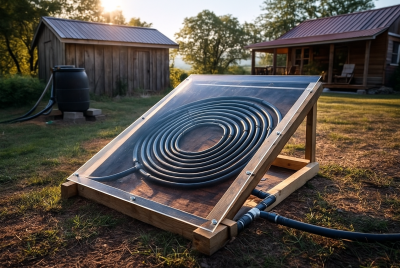Home Beer Brewing Kit: Crafting Delicious Beer at Home
We may earn a commission for purchases made using our links. Please see our disclosure to learn more.
Hey there, beer enthusiasts! Are you tired of settling with bland and overpriced beer? If so, maybe it’s time to dip your toes into homebrewing! Visiting breweries for fresh, craft beer isn’t always convenient so it’s nice to learn how to make your own. If you don’t have any idea how to start, a home beer brewing kit will be your best bud. It allows you to experiment with flavors and craft a delicious beer from the comfort of your home. Want to learn more? Continue reading below…
What is a Home Beer Brewing Kit?
Home beer brewing kit is a set of tools and ingredients to help beginners get started with homebrewing. What’s good about these kits is that they simplify the process. It offers everything you need from ingredients to instructions. You don’t have to be a brewing expert to get started. With pre-measured ingredients and clear instructions, you’ll feel like a pro even on your very first batch.
Why Brew Beer at Home?
Why bother brewing your own beer when you can easily grab a six-pack from the store? Because, my friend, there’s something special about sipping a beer that you created from scratch. Every sip feels rewarding!!! Imagine tasting that first sip and thinking, I made this. You have complete control over every aspect (flavor, bitterness, sweetness). And while there is an initial investment, brewing beer at home is surprisingly cost-effective in the long run. Plus, think about the bragging rights when your friends ask, “Where did you get this beer?” and you can respond, “I made it!”.
Components of a Home Beer Brewing Kit
A typical kit is like a puzzle where each piece plays a crucial part. It usually includes:
- Fermenter: This is the heart of your operation, where the magic (and science) happens.
- Ingredients: Malt, hops, yeast, and water—these are the raw materials that bring your brew to life.
- Tools: Think of a thermometer, hydrometer, and sanitizer as your sidekicks, ensuring everything is accurate and clean.
Some kits even come with extras like bottles, caps, and cappers to give you a full experience. (I mean, who doesn’t love a kit that includes everything except the kitchen sink?) Advanced kits might include high-tech gadgets, like digital thermometers or brewing kettles—perfect for those of you who want to take things up a notch.

How Do Home Brewing Kits Work?
Brewing beer is a lot like cooking, but with a bit more science and a whole lot of waiting. Here’s a simple breakdown:
- Mix the ingredients to create wort (this is the unfermented beer).
- Ferment it for a few weeks while yeast does its thing, turning sugars into alcohol.
- Bottle your brew, adding a little sugar to help it carbonate naturally.
Just think of it as a recipe, but instead of a meal, you’re making a magical liquid. (Remember, patience is key—just like when you’re waiting for dough to rise, except you’re waiting for a beer to become awesome.)
Choosing the Right Kit for Beginners
Feeling a little overwhelmed by all the options out there? Don’t sweat it. When you’re just starting, keep it simple. Look for a beginner-friendly kit with clear instructions and all the essential tools. (Trust me, you’ll thank me later when you’re not trying to decode a 10-step process!) Many beginner kits come with pre-measured ingredients, which reduces the chances of mistakes. Starting small means you’ll learn the basics before venturing into the wild world of advanced brewing techniques.
Understanding Beer Styles
Do you dream of the perfect IPA or long for the dark depths of a stout? Home brewing kits cater to all kinds of beer styles, so choosing the right one depends on your taste buds. Each beer style has its own brewing quirks—IPAs are all about that hop-forward punch, while stouts bring in roasted malts for that rich, smooth taste. (It’s like choosing between a bold, spicy salsa and a creamy guacamole—both are great, but different!) Explore and experiment to find what suits your style.
Ingredients 101: What’s in Your Beer?
Let’s break down the four magical ingredients that make up your beer:
- Malt: It’s the sweet, malty base that gives your beer body and flavor.
- Hops: The bitter warriors that balance out the sweetness and add all those delightful aromas.
- Yeast: This little critter is what ferments the sugar into alcohol, and it’s the secret to carbonation.
- Water: Believe it or not, water is crucial! It forms the foundation of your beer and can affect its final taste.
Each ingredient is like a different instrument in an orchestra. Together, they make the symphony of your perfect beer. (And just like a chef experimenting with spices, you can play around with different malts and hops to create something truly unique!)
Setting Up Your Brewing Space
Think of your brewing space like your brewing studio—keep it clean, organized, and ready for action. A counter or a garage works just fine, as long as you can keep distractions at bay (you don’t want to be brewing and accidentally knocking over a bottle of ketchup). Cleanliness is key, so have your cleaning supplies ready. The last thing you want is a stray crumb from last night’s pizza messing up your beer. (Trust me, been there, done that.)
The Brewing Process: Step-by-Step
Ready to brew? Here’s a quick-and-dirty guide:
- Sanitize everything. Seriously, clean everything.
- Boil the malt extract with water and hops to create wort.
- After cooling, move the wort to a fermenter. Add yeast to the mix.
- Seal the fermenter and let fermentation work its magic.
- Bottle the beer and let it carbonate for a couple of weeks.
Each step is a mini adventure on its own, and with each batch, you’ll get better at perfecting your technique. (And yes, there will be some trial and error, but that’s all part of the fun.)
The Fermentation Phase
Ah, fermentation. This is where the magic happens. Yeast gobbles up the sugars in the malt and turns them into alcohol and carbonation. It’s like a microscopic party in your fermenter. (I imagine the yeast are like tiny little dancing chefs, hard at work.) Temperature control is critical here—if it’s too warm or too cold, you might end up with a brew that doesn’t taste quite right. Keep the fermenter in a cool, dark place and let the yeast do their thing.
Putting Your Beer in a Bottle
It’s time to bottle your invention after the fermentation process is complete. Add a touch of sugar to each bottle to help it carbonate, and then seal it up tight. A good seal is essential to keeping the carbonation in and the spoilage out. (Plus, if you’re giving bottles as gifts, you can label them like they’re fine wine—talk about a personal touch!)
Troubleshooting Common Issues
Not everything goes perfectly, and that’s okay. If your beer turns out flat or a little off, don’t panic. You’re still learning! Brewing is a process of trial and error, and each batch will teach you something new. (If your first brew ends up being more “meh” than “wow,” it’s not the end of the world—every brewer has been there.)
The Chemistry and Science of Brewing Beer
The chemistry of beer brewing involves complex interactions, from the fermentation process to flavor enhancement. Recent advancements, like the use of microfluidic chips, are unlocking new ways to analyze beer composition, offering homebrewers insights into their craft (Modern Sciences). Additionally, the Bioinnovation Laboratory at Kennesaw State University explores fermentation’s impact on flavor and quality, using innovative techniques to study beer-material interactions (Bioinnovation Lab). These scientific approaches can help brewers refine their creations and achieve consistent results.
Recommended Home Beer Brewing Kits and Accessories
Choosing the right tools and ingredients is essential to ensure your brewing adventure is a success. Below are some excellent options to consider:
- Basic Home Brewing Kit
- Ideal for beginners, this kit typically includes a fermenter, airlock, sanitizer, and pre-measured ingredients.
- Look for kits designed for first-time brewers with detailed instructions.
- Deluxe Brewing Kit with Glass Fermenter
- Perfect for those who want to upgrade their brewing game.
- Includes a glass carboy fermenter, advanced tools like a hydrometer, and additional recipe options.
- All-Grain Brewing Kit
- For seasoned brewers ready to experiment with full-grain brewing techniques.
- Comes with a mash tun, sparge arm, and grain bags for complete customization.
- Portable Brewing Kit for Small Spaces
- Compact and designed to fit into limited areas like apartments or small kitchens.
- Often includes stackable fermenters and space-saving equipment.
- Digital Temperature-Controlled Fermenter
- Ensures precise fermentation by maintaining consistent temperatures.
- Great for brewing lagers or temperature-sensitive beer styles.
Safety Tips for Home Brewing
While brewing is fun, safety is important. Always be careful around hot liquids, and ensure your bottles are sealed properly. Invest in quality equipment, and you’ll reduce the risk of accidents (and we all know no one wants beer spilled everywhere).
Scaling Up: Advanced Brewing Kits
Once you’re ready to level up, advanced kits offer more features—like larger batches and temperature-controlled fermenters. These kits allow you to fine-tune your brewing skills and experiment even further. (It’s like moving from beginner’s soccer to playing in the big leagues. Get ready for next-level brewing!)
Why Patience is Key
Good beer takes time, so don’t rush it. Like aging a fine wine, your beer needs time to develop its flavors. (If you’re like me, the wait will drive you crazy—but trust me, the end result is worth it.)
Fun Facts About Home Brewing
- Home brewing dates back thousands of years (beer’s old, but it’s still rocking it!).
- George Washington himself brewed beer at Mount Vernon. Talk about a founding father and a brewing father.
- In medieval times, brewing was often a community event, where recipes were passed down from generation to generation.
Home Brewing and Sustainability
Not only is home brewing fun, but it’s also eco-friendly. Reusing bottles, minimizing waste, and supporting local farmers by choosing local ingredients all help reduce your environmental footprint. (Brewing beer and saving the planet—who knew?)
Summary
Home brewing is an adventure full of creativity, learning, and yes, beer. Whether you’re a craft beer enthusiast or simply looking for a new hobby, it’s a rewarding experience that teaches patience, precision, and innovation. So, what are you waiting for? Grab a home beer brewing kit, and let the brewing magic begin!
FAQs
1. What is the duration required to make beer at home?
About 4–6 weeks, depending on the style. Some beers need a little more love and time to reach their peak flavor.
2. Is it possible to make non-alcoholic beer at home?
Yes! It takes some extra steps, but you can totally brew non-alcoholic beer if that’s your thing.
3. Is home brewing legal?
In most places, yes, as long as it’s for personal use. Just make sure to check your local laws.
4. How much beer can I brew at once?
Most kits make 1–5 gallons, but you can scale up with larger setups if you’re feeling ambitious.
5. What’s the hardest part of home brewing?
The hardest parts are keeping things clean and being patient. But with practice, you’ll master both in no time!




